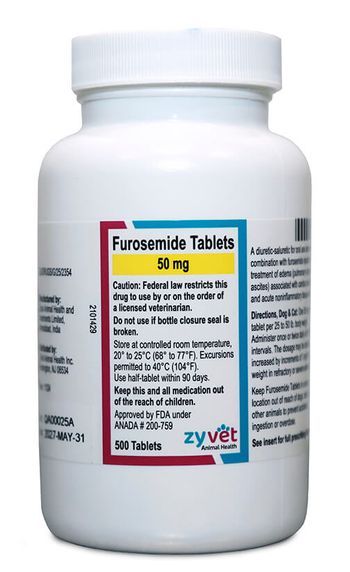
Exercise-induced collapse in Labrador Retrievers
Q: Please provide an updated review on exercise-induced collapse in Labrador Retrievers.
Q: Please provide an updated review on exercise-induced collapse in Labrador Retrievers.
A: Dr. Susan M. Taylor gave an excellent lecture on "Exercise-Induced Collapse in Labrador Retrievers: An Update" at the 2008 American College of Veterinary Internal Medicine Forum in San Antonio. Here are some relevant points:
A syndrome of exercise-induced collapse (EIC) in Labrador Retrievers was first described in the veterinary literature in 1993. During the last 15 years, EIC has been recognized with increasing frequency by veterinarians, dog trainers and owners.
For years veterinarians evaluated affected dogs for episodes of collapse, and speculated that their episodes were due to heat intolerance, low blood sugar, cardiac arrhythmias or possibly metabolic myopathies.
Now that it has been established as a specific disorder, it is evident that EIC is the most common reason for exercise intolerance and collapse in young, apparently healthy Labrador Retrievers.
Affected dogs can tolerate mild to moderate exercise, but occasionally become ataxic and collapse after five to 15 minutes of participation in trigger activities involving strenuous exercise.
A comprehensive investigation has been ongoing for nearly a decade, involving investigators from the University of Saskatchewan, the University of Minnesota and the Comparative Neuromuscular Unit at the University of California.
A survey of owners of Labrador Retrievers with presumed EIC was performed. To participate in the survey, dogs had to be purebred and registered, have experienced at least three episodes and veterinary evaluation must have ruled out systemic and cardiac causes of exercise intolerance or collapse. Over 350 completed surveys were received, and 225 met the survey criteria.
Clinical and laboratory evaluation of 14 dogs with EIC at rest and during and following completion of a standardized strenuous-exercise protocol was compared with findings from 14 Labrador Retrievers without EIC performing the same exercise.
Physical examination, neurologic examination, thoracic radiographs, ECG, echocardiography, CBC, biochemical profile and acetylcholine receptor antibody were performed on each dog at rest. Plasma and urine carnitine were measured.
Dogs retrieved a soft plastic dummy repeatedly for 10 minutes or until a gait abnormality was apparent. Exercise and recovery were videotaped. At the conclusion of exercise, rectal temperature, pulse rate and character, limb reflexes, arterial blood gas, plasma lactate and pyruvate and a serum biochemistry panel were performed.
Sequential re-evaluation of temperature, pulse rate and character, lactate and pyruvate and limb reflexes continued for 120 minutes following termination of exercise. Muscle biop-sies were collected on the day after exercise for analysis.
Who gets EIC?
Most, but not all, affected dogs are from field-trial breedings. Signs first become apparent in young dogs between 5 months and 5 years of age. Labradors of all colors (black, yellow, chocolate) are affected. Littermates and other related dogs are commonly affected. Dogs with EIC usually are described as being extremely fit and muscular with an excitable temperament and lots of retrieving drive.
Affected dogs can tolerate mild to moderate exercise, but occasionally after five to 15 minutes of strenuous exercise they develop weakness, apparent incoordination and then collapse.
Early gait changes include a rocking or forced gait, carpal hyperextension and excessive pelvic-limb abduction when turning. The abnormalities are progressive, and dogs that remain ambulatory typically walk with a flexed (crouched) rear limb gait characterized by long strides, excessive limb abduction during turning and a basewide stance.
Owners describe the rear limbs as "floppy" and the gait as wobbly or "loose." Some dogs are affected in all four limbs, resulting in collapse and inability to rise during a severe episode; some lose all voluntary motor ability. Some recumbent dogs exhibit markedly increased forelimb extensor tone. Hypermetria and loss of balance are common, particularly during recovery.
Gait, posture and balance abnormalities suggest neurologic dysfunction during the episode. Most dogs are mentally normal, but some appear dazed or confused during an episode. Dogs do not seem to be in pain during or after the collapse, and usually are anxious to continue participating in the activity. Patellar reflexes are absent after exercise in collapsing dogs, and do not reappear until five to 30 minutes after exercise. After 10 to 30 minutes of rest, the dogs return to normal.
Activities associated with inducing collapse episodes in EIC-susceptible dogs include "fun" retrieves, retrieving bumpers or birds on land as part of a training exercise or field trial, excited play with other dogs and upland hunting.
Factors perceived by owners as contributing to the likelihood that an EIC-susceptible dog will collapse on a given day or during a particular exercise include extreme excitement associated with the trigger activity, stress during formal training and excessive environmental heat and humidity.
Evaluation of EIC
Dogs with EIC are normal at rest. They usually are extremely fit and well-muscled. Cardiovascular and respiratory examinations are unremarkable, with normal auscultation, electro-cardiograms, thoracic radiographs and cardiac ultrasound before exercise.
After exercise, during collapse, dogs are tachycardic and hyperthermic (often >42°C), but not different from unaffected dogs exercised in the same manner.
The time it takes for dogs with EIC to return to their resting temperature after exercise is not different from normal dogs. These dogs are not lame, and they do not have sore joints, muscles or bones before or after exercise. Nervous system examination is normal at rest, but patellar reflexes are diminished or absent in collapsing dogs with EIC.
Routine blood analysis (CBC, biochemical profile) is normal at rest, and there are only minor changes following exercise when compared with normal exercising Labradors. Arterial blood gas analysis in the EIC and the normal Labrador Retrievers revealed significant respiratory alkalosis and metabolic acidemia post-exercise, reflecting hyperventilation and strenuous anaerobic activity.
Similar results have been reported in Labrador Retrievers participating in field training and competition. Lactate and pyruvate concentrations after exercise are similar in EIC dogs and normal dogs, and muscle biop-sies are normal, making an abnormality of oxidative metabolism unlikely.
Long-term outlook
Dogs with EIC do not appear to have progressive disease. They do not develop systemic or neurologic disorders and, except for their EIC, seem normal. Most affected dogs cannot continue to participate in trigger activities, but as long as intense exercise, excitement, and training stress are avoided they can live normal lives as pets.
Treatment
There are numerous anecdotal reports of dogs being able to resume trigger activities if they are managed with phenobarbital (2 mg/kg PO BID). Treatment with phenobarbital and other sedative drugs simply may decrease the level of excitement or anxiety associated with inducing an episode of collapse.
Many affected dogs will seem to improve, having fewer episodes of collapse as they age or when they are neutered.
Some affected dogs have died during an episode of collapse; these have not always been considered to be the most severely affected.
Heredity of EIC
Littermates and other related dogs often are affected, making it apparent that EIC is hereditary. Pedigree analysis has established the mode of inheritance to be autosomal recessive. This was confirmed once the probable causative mutation was identified and a DNA test was used to verify EIC status.
Most dogs homozygous for the mutation are symptomatic, but a few are not. Collapse may not occur in dogs with EIC unless they have the opportunity to participate in strenuous exercise with the necessary mix of enthusiasm and excitement.
EIC or heat stroke?
With heat stroke-induced collapse in dogs, recovery is very slow or prolonged, taking hours to days, or else there is progression to death.
Laboratory evaluation reveals a dramatic increase in serum CK (usually seven to 11 times normal). Mentation changes that are severe, progressive and persistent (lasting hours to days) occur in 80 percent of affected dogs, and significant endothelial injury leads to microvascular thrombosis, DIC, thrombocytopenia and bleeding as well as acute renal failure in most dogs.
In contrast, dogs with EIC collapse without showing laboratory abnormalities, and they recover completely within five to 25 minutes.
EIC or malignant hyperthermia?
Malignant hyperthermia (MH) in dogs as in other species is caused by a mutation in the calcium release channel of the sarcoplasmic reticulum in skeletal muscle — the ryanodine receptor.
All of the affected EIC dogs evaluated were genotyped and tested for the known ryanodine receptor mutation and for linkage to other sites on chromosome 1, eliminating this mutated gene as the cause of EIC.
Dogs with collapse due to MH typically look very different from those with EIC. Their muscles are rigid (not flaccid like EIC), and they have increased serum CK.
Histopathologically, their muscles show rhabdomyolysis (EIC muscles are normal). Dogs with MH often hypo-ventilate from persistent muscular contraction and are hypercarbic, while dogs with EIC hyperventilate.
EIC or mitochondrial myopathy?
Most dogs with mitochondrial myopathies have severe exercise intolerance that can be consistently demonstrated with even mild exercise.
They develop extreme lactic aci-demia with even mild exercise and an elevated lactate to pyruvate ratio.
Many have "ragged red fibers" demonstrated on histopathology, which really are just subsarcolemmal mitochondria as well as ultrastructural changes to the mitochondria.
None of this is evident in dogs with EIC, and it has become apparent that dogs with EIC suffer more from neurologic dysfunction than from muscular weakness.
Dr. Hoskins is owner of Docu-Tech Services. He is a diplomate of the American College of Veterinary Internal Medicine with specialities in small animal pediatrics. He can be reached at (225) 955-3252, fax: (214) 242-2200 or e-mail:
Newsletter
From exam room tips to practice management insights, get trusted veterinary news delivered straight to your inbox—subscribe to dvm360.






